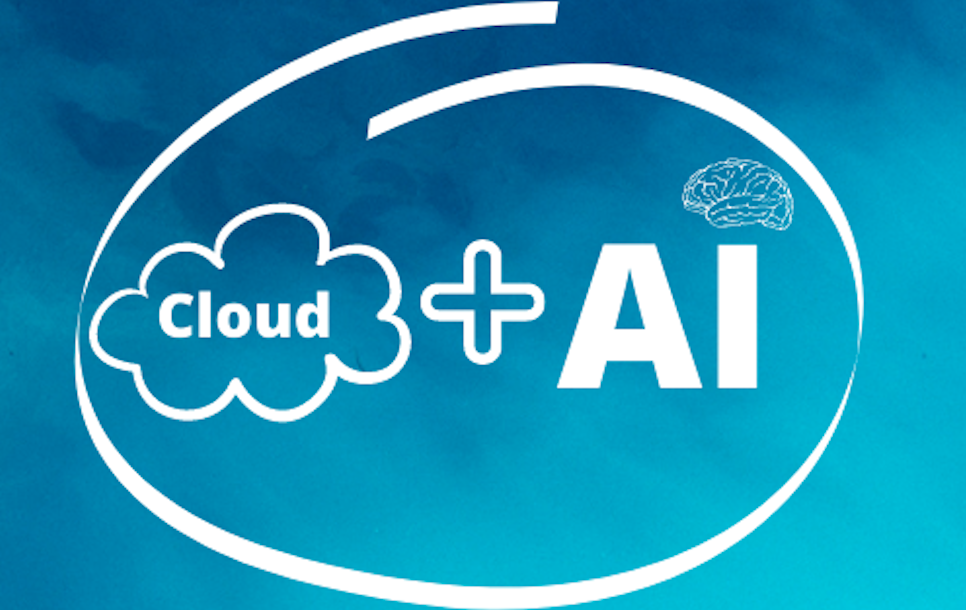Cloud and AI: The Powerful Pair Shaping Tomorrow’s Technology
In the ever-evolving landscape of digital innovation, two technologies have emerged as the backbone of modern transformation: Cloud Computing and Artificial Intelligence (AI). While each is revolutionary on its own, their convergence is unlocking unprecedented opportunities for businesses, researchers, and everyday users.
This blog explores how Cloud and AI work together, their real-world applications, the challenges they face, and what the future holds for this dynamic duo.
Understanding Cloud Computing and AI
Cloud Computing
Cloud computing is the delivery of computing services—including storage, processing power, databases, and software—over the internet. Instead of relying on physical servers, businesses and individuals can access these resources on-demand from providers like Amazon Web Services (AWS), Microsoft Azure, and Google Cloud.
One of the biggest advantages of cloud computing is its scalability. Companies no longer need to invest in expensive hardware; they can simply rent computing power as needed. This flexibility reduces costs, improves efficiency, and allows for seamless global access to data and applications.
Artificial Intelligence (AI)
Artificial Intelligence refers to machines designed to perform tasks that typically require human intelligence. This includes learning from data, recognizing patterns, making decisions, and even understanding natural language. AI encompasses several key technologies, such as Machine Learning (ML), Natural Language Processing (NLP), Computer Vision, and Predictive Analytics.
From virtual assistants like Siri and Alexa to advanced fraud detection in banking, AI is becoming an integral part of our daily lives. However, AI systems require vast amounts of data and computational power to function effectively—which is where cloud computing comes in.
Why Cloud and AI Are a Perfect Match
The marriage of Cloud and AI is a natural fit because each technology addresses the other’s limitations.
1. Cloud Provides the Infrastructure AI Needs
Training AI models demands enormous computing resources. A single deep learning algorithm can take weeks to train on a traditional server, but cloud platforms offer high-performance GPUs and distributed computing that drastically reduce processing time. Additionally, cloud storage allows businesses to manage massive datasets without physical hardware constraints.
2. AI Enhances Cloud Capabilities
While the cloud supports AI, AI also improves cloud services. For example, AI-driven automation helps optimize cloud resource allocation, reducing costs and improving efficiency. AI-powered security systems monitor cloud environments in real-time, detecting and neutralizing threats faster than human analysts. Moreover, AI enables smarter data analytics, helping businesses extract meaningful insights from their cloud-stored information.
3. Democratizing AI Through the Cloud
In the past, only tech giants like Google and Amazon could afford to develop AI due to the high costs of infrastructure. Today, cloud platforms offer AI-as-a-Service (AIaaS), allowing startups and small businesses to integrate AI into their operations without heavy upfront investments. Tools like AWS SageMaker, Google AI, and Azure Machine Learning provide pre-built models that companies can customize for their needs.
Real-World Applications of Cloud and AI
The combination of Cloud and AI is already transforming industries in remarkable ways.
Healthcare
AI-powered diagnostic tools, running on cloud platforms, analyze medical images (such as X-rays and MRIs) with remarkable accuracy, assisting doctors in early disease detection. Pharmaceutical companies use AI to accelerate drug discovery by simulating molecular interactions in the cloud, cutting down research time from years to months.
E-Commerce and Retail
Online retailers leverage AI-driven recommendation engines hosted in the cloud to personalize shopping experiences. Platforms like Amazon and Netflix use these systems to suggest products or content based on user behavior. Additionally, AI helps optimize inventory management by predicting demand trends, reducing waste, and improving supply chain efficiency.
Banking and Finance
Banks use AI algorithms to detect fraudulent transactions in real-time, analyzing millions of data points stored in the cloud. AI-powered chatbots handle customer inquiries, providing instant support without human intervention. Investment firms also rely on AI for predictive analytics, forecasting market trends with greater accuracy.
Manufacturing and IoT
Factories equipped with IoT sensors collect vast amounts of operational data, which AI processes in the cloud to predict equipment failures before they happen—a concept known as predictive maintenance. Smart manufacturing plants use AI to automate quality control, reducing defects and improving production efficiency.
Smart Assistants and Voice Technology
Virtual assistants like Alexa, Google Assistant, and Siri rely on cloud-based AI to understand and respond to voice commands. These systems continuously learn from user interactions, becoming more accurate over time.
Challenges in Integrating Cloud and AI
Despite their synergy, combining Cloud and AI presents several challenges.
Data Privacy and Security Concerns
Storing sensitive data in the cloud raises concerns about breaches and unauthorized access. Companies must implement strong encryption, comply with regulations like GDPR and HIPAA, and use AI-driven security tools to monitor threats.
Cost Management
While cloud computing reduces hardware costs, running large-scale AI models can still be expensive. Businesses must optimize resource usage by leveraging auto-scaling, spot instances, and serverless computing to keep expenses in check.
Latency Issues
Applications requiring real-time AI processing—such as autonomous vehicles or robotic surgery—cannot afford delays caused by cloud latency. Edge computing, where data is processed closer to its source rather than in a centralized cloud, helps mitigate this problem.
The Future of Cloud and AI
The partnership between Cloud and AI is still evolving, with several exciting trends on the horizon.
AI-Driven Cloud Optimization
Future cloud platforms will use AI to automate resource management, predicting traffic spikes and adjusting capacity dynamically. This will lead to even greater efficiency and cost savings.
Generative AI and the Cloud
The rise of Generative AI—tools like ChatGPT, MidJourney, and GitHub Copilot—relies heavily on cloud scalability. As these models grow more sophisticated, cloud providers will develop specialized infrastructure to support them.
Hybrid and Multi-Cloud AI Solutions
Businesses are increasingly adopting multi-cloud strategies, using services from AWS, Azure, and Google Cloud simultaneously. AI will play a key role in managing workloads across these platforms seamlessly.
AI for Sustainable Computing
Data centers consume massive amounts of energy. AI can optimize power usage, reducing the carbon footprint of cloud computing. Companies like Google and Microsoft are already using AI to make their data centers more eco-friendly.
Final Thoughts
Cloud computing and AI are not just complementary technologies—they are reshaping the way we live and work. From healthcare breakthroughs to smarter business operations, their combined potential is limitless.
For organizations looking to stay competitive, embracing Cloud and AI is no longer optional—it’s essential. Those who harness their power today will lead the innovation of tomorrow.
What are your thoughts on the future of Cloud and AI? Are you already leveraging these technologies in your industry? Share your experiences in the comments below!

